
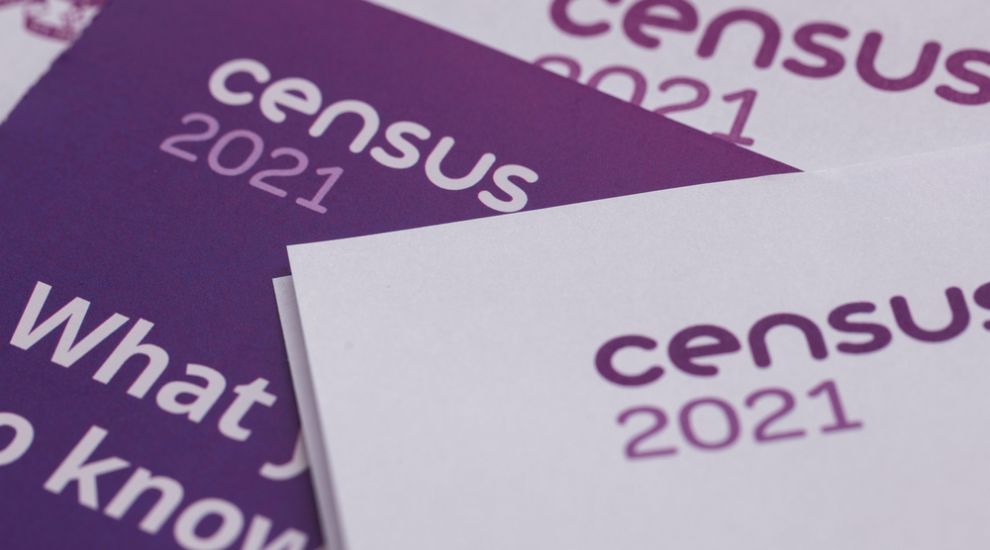

For islanders who like detail, Jersey's statistics team has now published the full report of the 2021 census, releasing some new numbers on topics like age, gender, local property ownership and employment.
Some of the major census findings were released as bulletins earlier this year.
But this week, the full version came out, so Express has crunched the numbers to see what's new...
The census provided a detailed breakdown of both the age and gender make-up of Jersey's population.
New to the recently released census report was a breakdown of the average age of Jersey residents. According to the census, the mean average age of Jersey residents was 42.3 years and the median age was 43 years. The median age has been steadily increasing since 1931, and was 40 years in 2011.
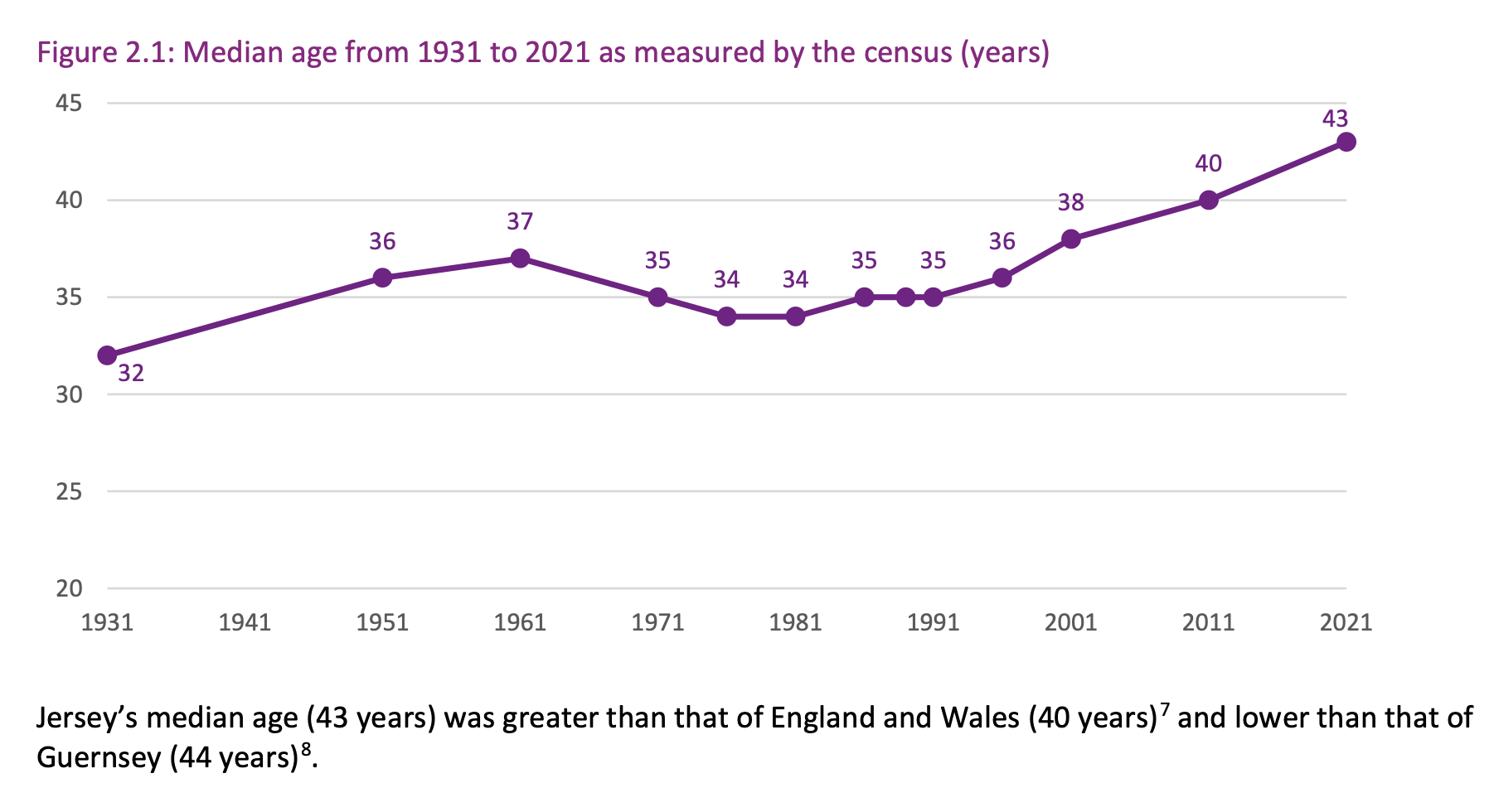
Pictured: Jersey's median age over time. The dip between 1971 and 1986 was a result from the inward migration of working age residents. Since then, it has steadily increased.
Also newly released was a breakdown of age by Parish, with St Helier possessing the youngest median average at 40 years, and St Peter and St Brelade holding the oldest at 48 years. This latter figure was partly influenced by the presence of residential homes within those parishes.
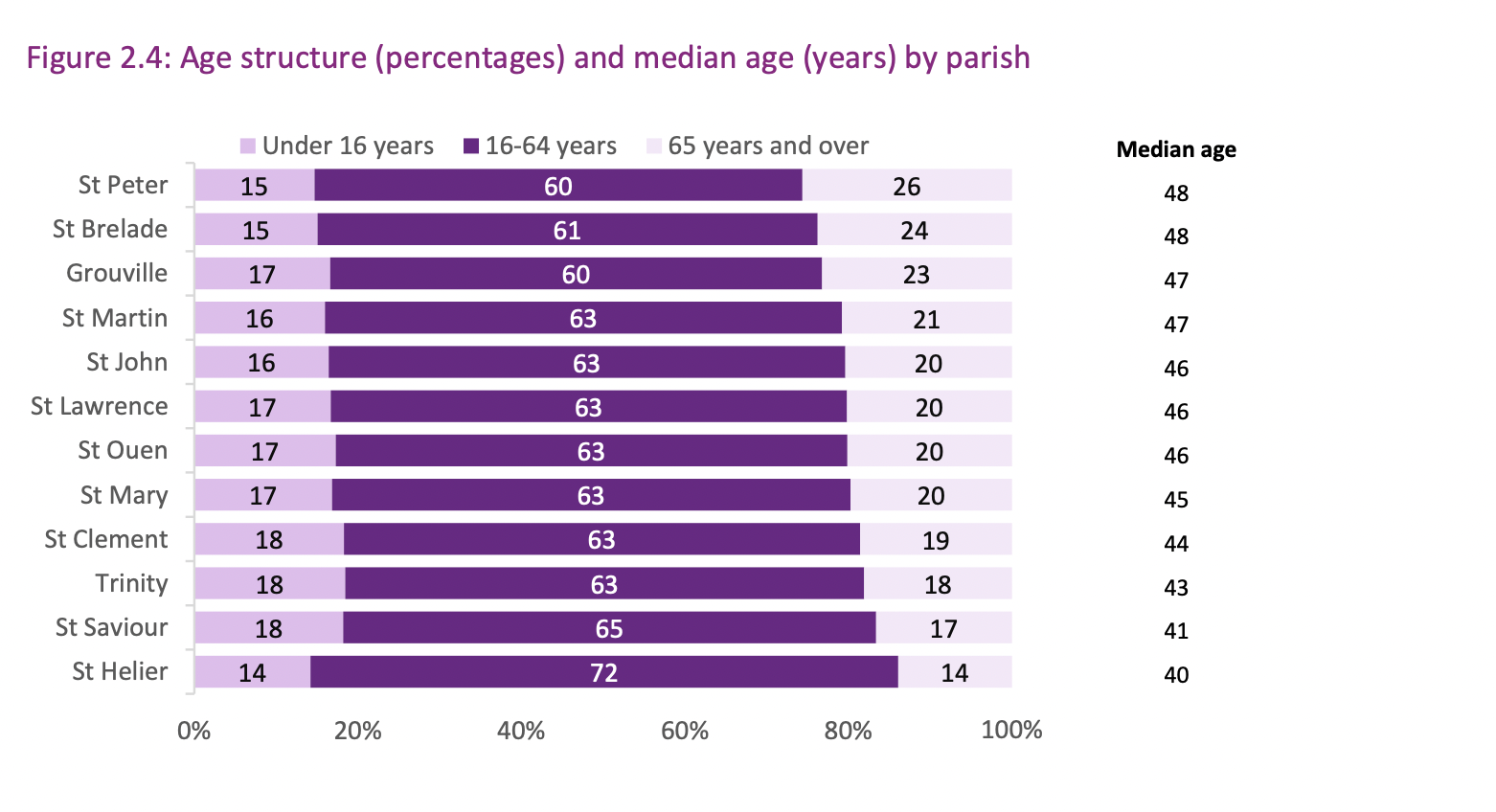
Pictured: Jersey's median age by Parish.
Finally, the report contains details of Jersey's dependency ratio, that is the ratio between the economically productive population and the economically dependant population.
The larger the dependency ratio, the greater the obligation placed on the economically active population. Jersey's dependency ration is lower, at 52%, than both England & Wales, 56%, and Guernsey, 57%.
However, this figure has increased from 2011, when it was 46%. You can read more about the impact of Jersey's ageing population HERE.
New to the Census report is a breakdown of Islanders marital status.
The data shows that 45% of adults aged 16 or over in Jersey were married, a slightly lower proportion than in 2011, when 48% were married. 11% of adults were divorced and 35% of adults had never married. 1% of Jersey's population lived as couples i.e. co-habiting couples who were not married or in a civil partnership.
The proportion of married adults has been declining steadily since 1971, from 643 per thousand people to 471 per 1000. The divorce rate has shown the opposite trend, increasing from 21 per 1000 people in 1971 to 109 per 1000 in 2021.
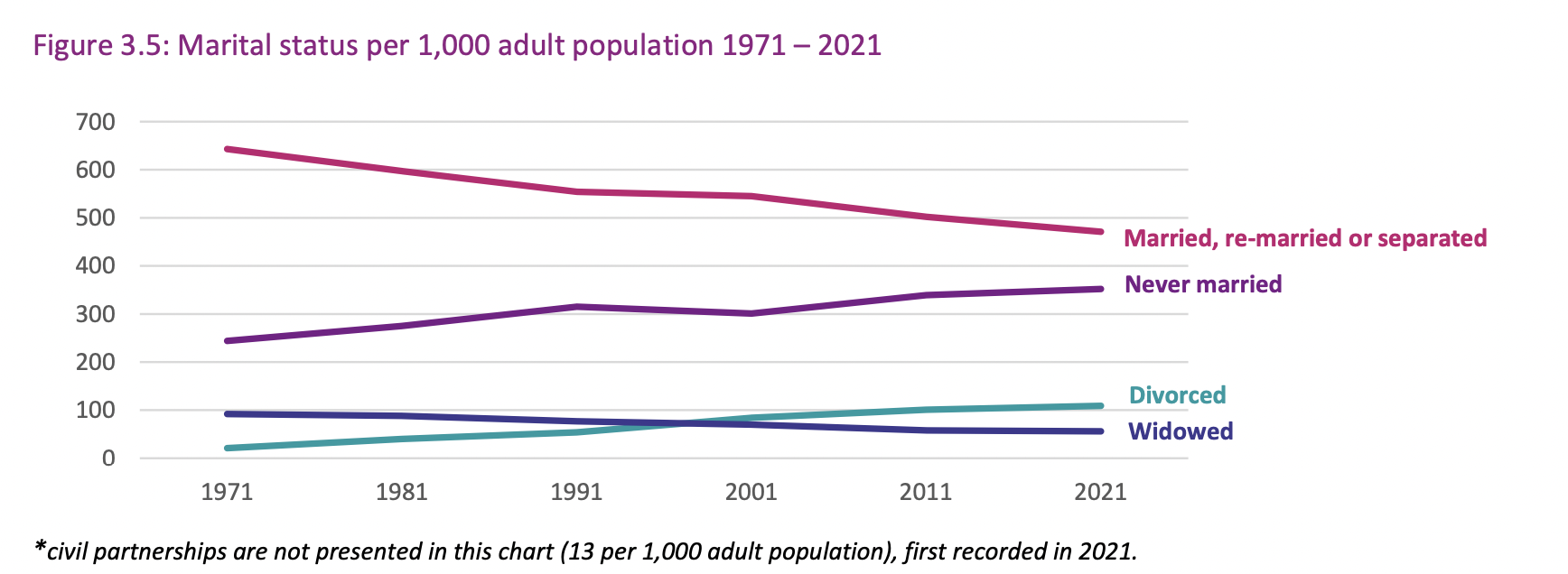
Pictured: Jersey's Marital status over time.
The 2021 census was the first to include the category of 'civil partnership' as an answer to the question of marital status, allowing it to be recorded for the first time since same sex civil partnerships were legalised in Jersey in 2012.
The number of civil partnerships in Jersey, was 809, around 0.9% of the population. 0.4% of marriages are estimated to same-sex, with 0.2% of the population in same sex marriages. Generally, people who listed their sexual orientation as gay or lesbian were less likely to be married or in a civil partnership (25%) than people who described themselves as straight (47%).
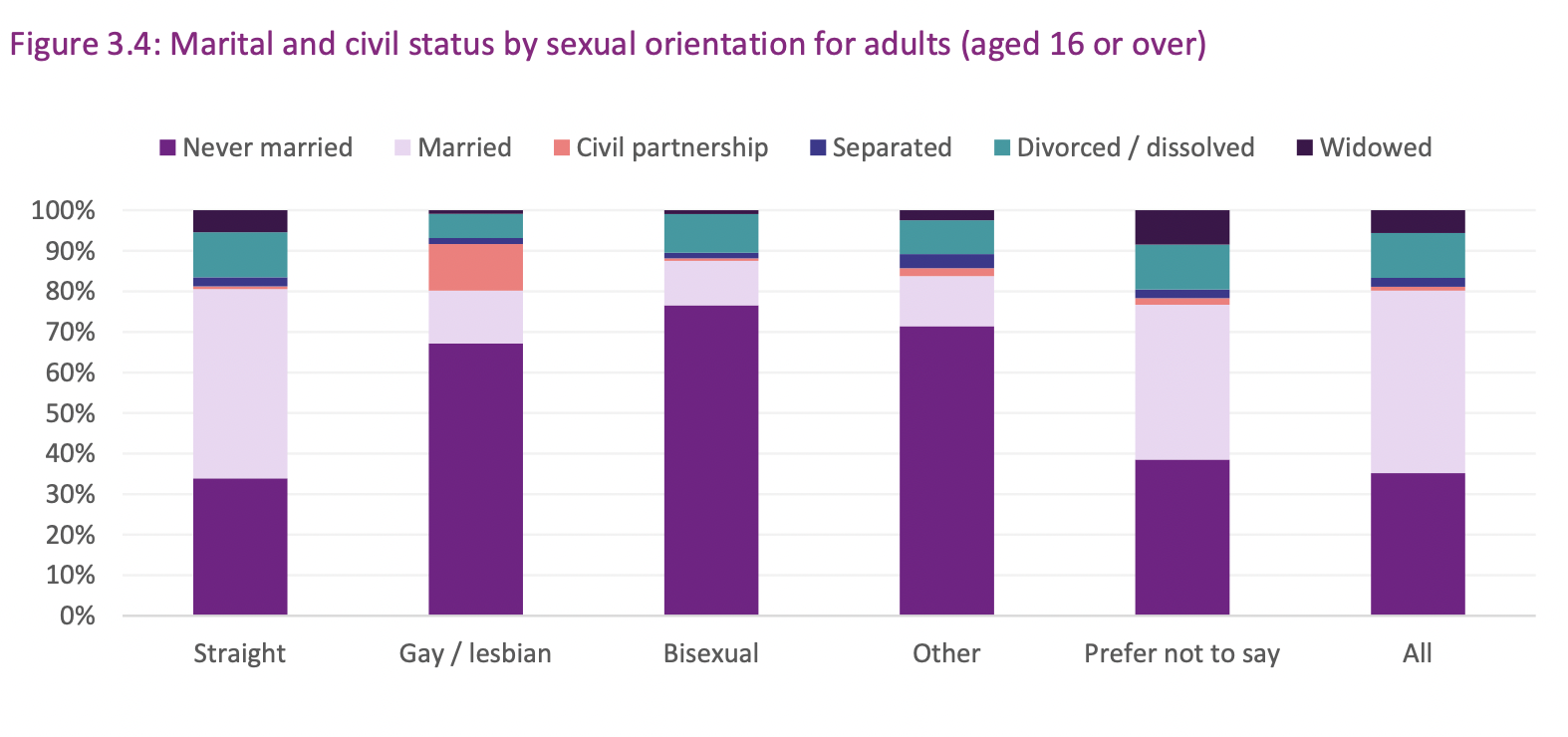
Pictured: Jersey's martial status by sexual orientation.
A breakdown was also provided of the sexual orientation of Jersey residents, collected for the first time in 2021.
For islanders aged 16 and over, 87% identified as straight or heterosexual, with 2% identifying as gay, lesbian or bisexual. 0.2% stated another sexual orientation. The proportion of adults identifying as either gay/lesbian, bisexual or other decreased with age, from 4.8% of 16-24 year olds to 0.5% of adults aged 65 and over.
Similarly, a new question on gender identity was introduced for the 2021 census. 189 adults, or 0.2% of the population, reported that their gender was not the same as the sex they were registered at birth. The proportions again decreased with age, with 0.5% of 16-24 year olds reporting that their gender was different from their assigned sex, to 0.1% of adults aged 65 or over.
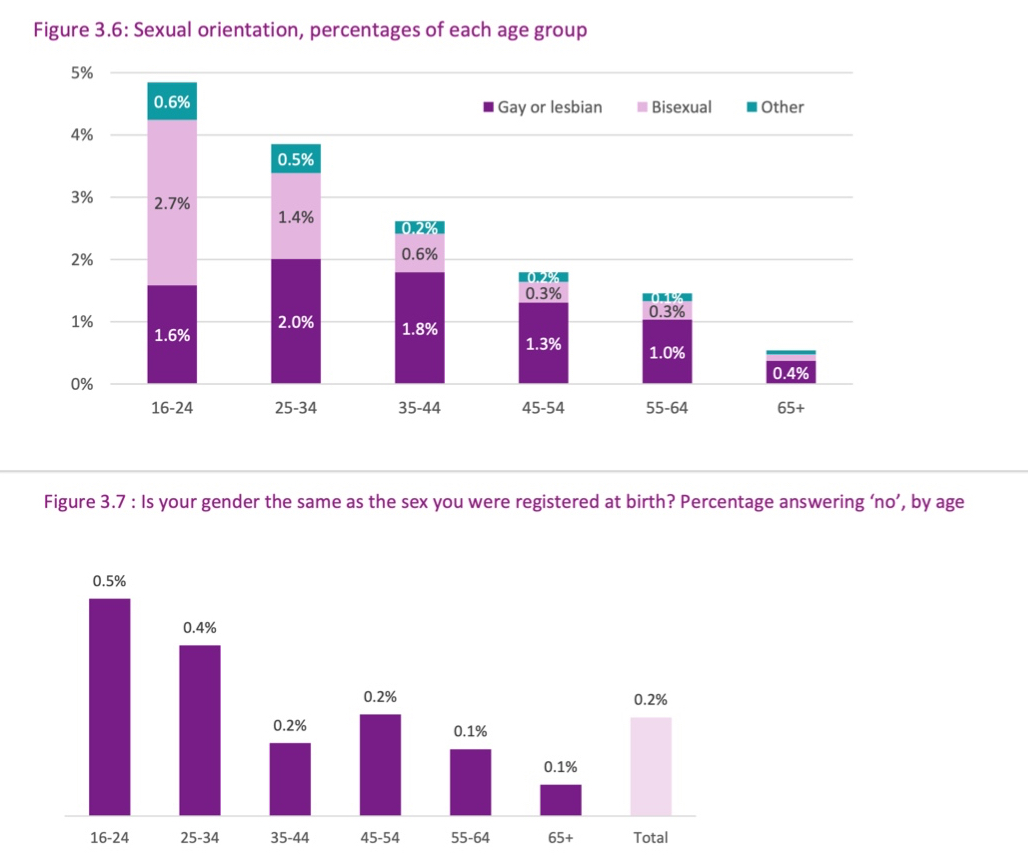
Pictured: Sexuality and Gender in Jersey.
The 2021 census showed that 4,027 private dwellings were identified as vacant, corresponding to a vacant rate of 8.3%. This was an increase on 2011, where 3,103 private dwellings were listed as vacant, a vacant rate of 6.9%. You can read more on this HERE.
However, the new report has also supplied the number of vacant dwellings by property type. The report showed that the majority of vacant dwellings were flats (64%) and over a third were houses (36%). This was similar to 2011.
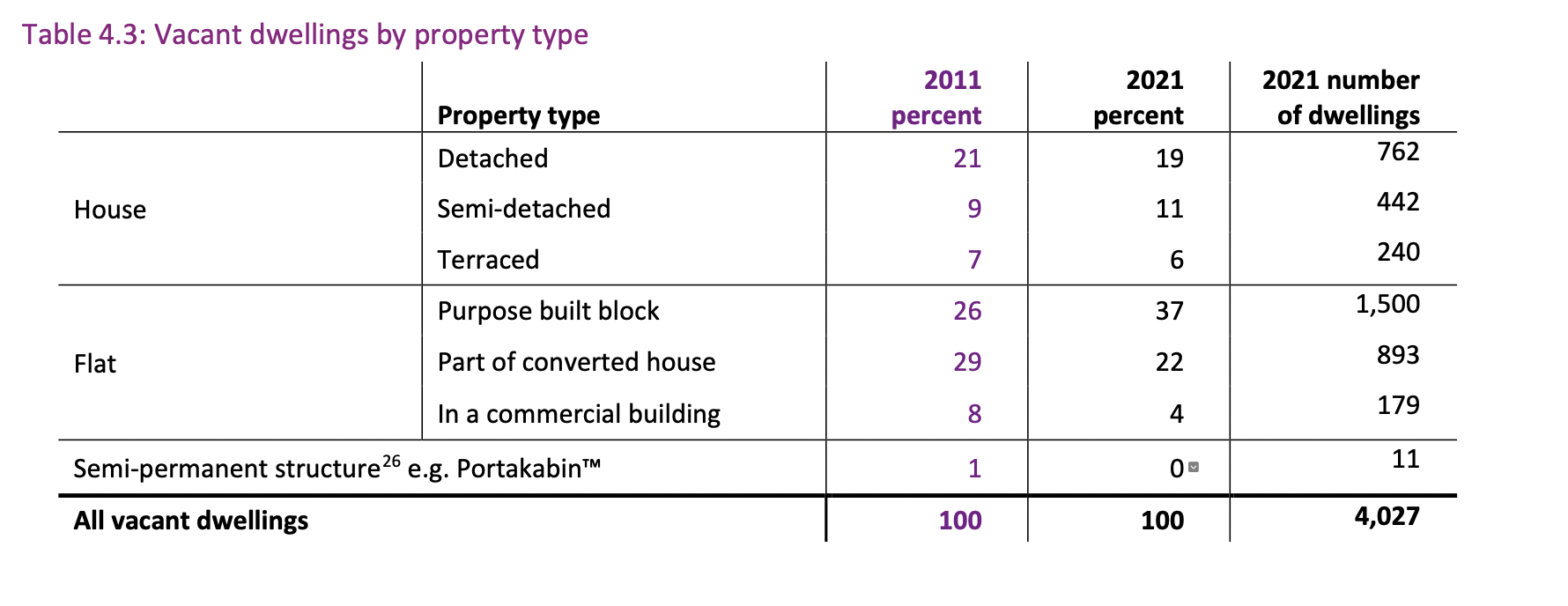
Pictured: The number of vacant dwellings by type in Jersey.
The report also includes details on the number of households considered "over-crowded" and "under-crowded," which you can read more about HERE.
The census provides a detailed breakdown of employment in Jersey.
On census day, 68% of adults aged 16 and over were economically active. Of those who were inactive, 63% were retired and 13% were in full-time education. 19% of economically inactive women were looking after the home, compared with 2% of economically inactive men.
In terms of occupation, the largest proportion of people worked in a 'professional' occupation, 17% of workers, including health professionals, teachers, buisness and IT professionals. The number of people working in a 'professional' capacity has risen by 31% since 2011.
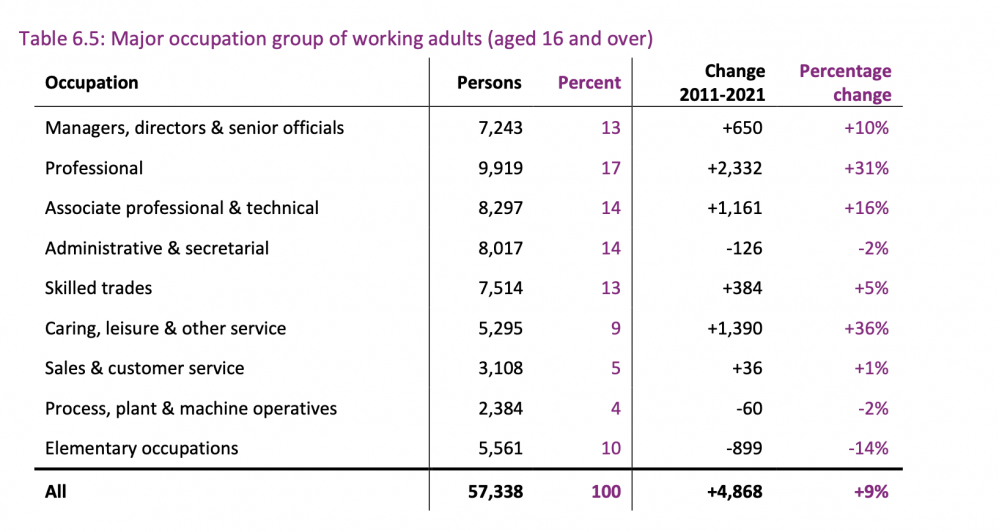
Pictured: Occupations in Jersey.
In terms of unemployment, the International Labour Organisation (ILO) puts Jersey's unemployment rate at 3.5% in 2021, equal to 2,058 people. This is a favourable rate compared to the UK, with a rate of 4.7%.
A figure new to the census report is the NEET rate. That is to say, the number of young people not in employment, education or training. According to the report, this corresponds to approximately 8.2% of people aged between 16-24. The rate was slightly lower for females (7.2%) than for males (9.1%). This figure is lower in Jersey than in the UK, where the NEET rate is 9.8%.
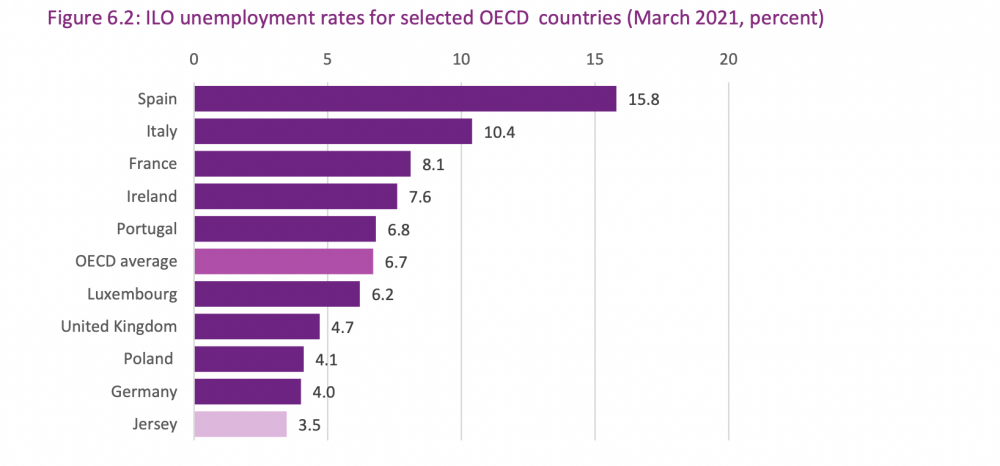
Pictured: Jersey' unemployment rate compared to other OECD (Organisation for Economic Co-operation and Development) countries.
In 2021, the census asked an entirely new question relating to the number of hours worked in 'additional jobs'. Only 7% of workers actually reported working in additional jobs, 4,138 people. Of these people, the mean average hours worked in additional jobs was around 10.8 hours per week.
The census report also provides a detailed breakdown of levels of education in Jersey, which you can read more about HERE.
Comments
Comments on this story express the views of the commentator only, not Bailiwick Publishing. We are unable to guarantee the accuracy of any of those comments.